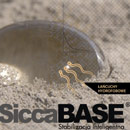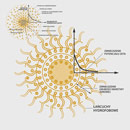The African continent stands at a pivotal moment, anticipating significant investments that promise to reshape its economic future. With the International Development Association (IDA) projecting a remarkable influx of 100 billion dollars, the potential for rapid growth and sustainable development appears more attainable than ever.
Such a substantial financial commitment will not only bolster infrastructure and industry but also enhance the effectiveness of development aid. This increased support will likely cultivate an environment ripe for innovation and entrepreneurship, laying the groundwork for a thriving economy across the region.
As nations strategize on how to best utilize these forthcoming funds, the emphasis on building resilient systems through strategic investments will be paramount. The focus will center on harnessing local resources, driving economic empowerment, and ensuring sustainable progress that resonates through generations.
Economic Recovery in Africa: $100 Billion from IDA Expected
The anticipated $100 billion from the International Development Association (IDA) represents a significant opportunity for Africa's economic revival. This influx of funds is expected to stimulate key sectors critical for recovery, thereby enhancing resilience and growth across the continent.
In the face of multiple challenges, including climate change and public health crises, international cooperation and development aid play crucial roles in Africa’s recovery strategy. By channeling resources toward infrastructure development, education, and sustainable agriculture, the IDA funds can help to address both immediate needs and long-term goals.
The investments facilitated by these financial resources are likely to promote job creation, improve access to essential services, and strengthen regional economies. They can also catalyze partnerships between governments, private enterprises, and civil society, fostering an environment conducive to shared growth and stability.
Moreover, the successful utilization of the $100 billion hinges on transparent governance and accountability measures. Ensuring that funds are deployed effectively is paramount for maximizing their impact on development outcomes. As African nations work closely with international donors, the emphasis will be on aligning funding with local needs and priorities.
This expected financial support serves as a rallying point for enhanced collaboration among various stakeholders. By leveraging these investments, African economies can build more robust frameworks that are well-equipped to face future challenges and capitalize on new opportunities.
How Will the $100 Billion from IDA be Allocated Across African Nations?
The allocation of the $100 billion from the International Development Association (IDA) promises significant assistance for economic recovery across Africa. There will be a strong focus on targeted economic projects designed to stimulate growth and enhance regional development.
A considerable portion of the funds will be directed towards infrastructure projects. Investing in transportation, energy, and communication networks is crucial for enabling trade and improving access to markets. This infrastructure development is vital to support local economies and facilitate the movement of goods and services across borders.
In addition, agriculture will receive a significant investment. Projects aimed at improving agricultural productivity and sustainability will be prioritized. By implementing advanced techniques and providing access to resources, the IDA funding seeks to enhance food security and rural livelihoods, which are foundational for economic stability.
Healthcare and education are also expected to be beneficiaries of this funding. Increasing access to quality healthcare and educational resources addresses fundamental barriers to economic progress. By empowering individuals through education and ensuring healthier populations, African nations can foster long-term development and resilience.
The IDA’s approach to this allocation will consider the specific needs of each country, ensuring that the aid is adaptive to local contexts. Collaborative efforts with regional governments, NGOs, and community organizations will play a key role in identifying priority areas for investment and ensuring that projects align with the broader goals of sustainable growth.
In summary, the $100 billion from IDA will serve as a critical resource for advancing economic initiatives aimed at fostering regional development, enhancing infrastructure, supporting agriculture, and improving health and education systems across African nations. This strategic allocation is pivotal for achieving lasting economic recovery.
What Sectors Will Benefit Most from IDA Funding in Africa?
The anticipated $100 billion from the International Development Association (IDA) presents a significant opportunity for various sectors in Africa. This funding is expected to stimulate growth and development through targeted investments across multiple areas.
- Infrastructure Development: Enhancing transportation, energy, and communication systems will be a priority. Improved infrastructure will facilitate trade and connect markets.
- Agriculture: Investments in agricultural projects are crucial for food security and economic stability. IDA funding can support innovations and sustainable practices.
- Health Services: Strengthening health systems and increasing access to quality care are essential for improving the well-being of populations, especially post-pandemic recovery.
- Education: Funding can enhance educational systems, creating skilled workforces that can contribute to economic growth. This includes both primary education and vocational training.
- Technology and Innovation: Supporting tech startups and infrastructure will be important for fostering innovation and digital transformation in various sectors.
- Environmental Sustainability: Projects aimed at combating climate change and promoting renewable energy will be vital to preserve resources for future generations.
The success of these projects depends on collaboration among governments, international financing entities, and local stakeholders. Enhanced cooperation will lead to better project execution, ensuring that funding translates into tangible improvements.
For further insights on these developments, visit https://africahotnews.com/.
What Strategies Can African Countries Implement to Maximize IDA Support?
African nations can adopt several strategies to enhance the impact of the anticipated $100 billion in IDA support. One critical approach is to strengthen international cooperation to align funding with national development goals. By fostering partnerships with international financial institutions and donor countries, African states can ensure that the aid is effectively integrated into long-term development plans.
Another strategy involves prioritizing sectors that are essential for sustainable development. Investments in infrastructure, healthcare, and education can create a strong foundation for regional growth, attracting further international financing. By demonstrating effective use of initial funding, countries can enhance their credibility and attract additional investments.
Capacity building is also vital. Training local institutions and stakeholders to manage and allocate resources efficiently will lead to better project implementation and outcomes. This will not only maximize immediate benefits from IDA support but also create a more resilient system for future financing needs.
Moreover, transparency and accountability in the utilization of funds play a significant role in building trust with international donors. Establishing robust monitoring and evaluation frameworks can showcase the effective deployment of resources and encourage ongoing support.
Finally, leveraging technology and innovation in addressing local challenges can align with the global shift towards sustainable development. Embracing digital solutions can enhance service delivery and stimulate economic activities, paving the way for increased regional growth and improved living standards.












